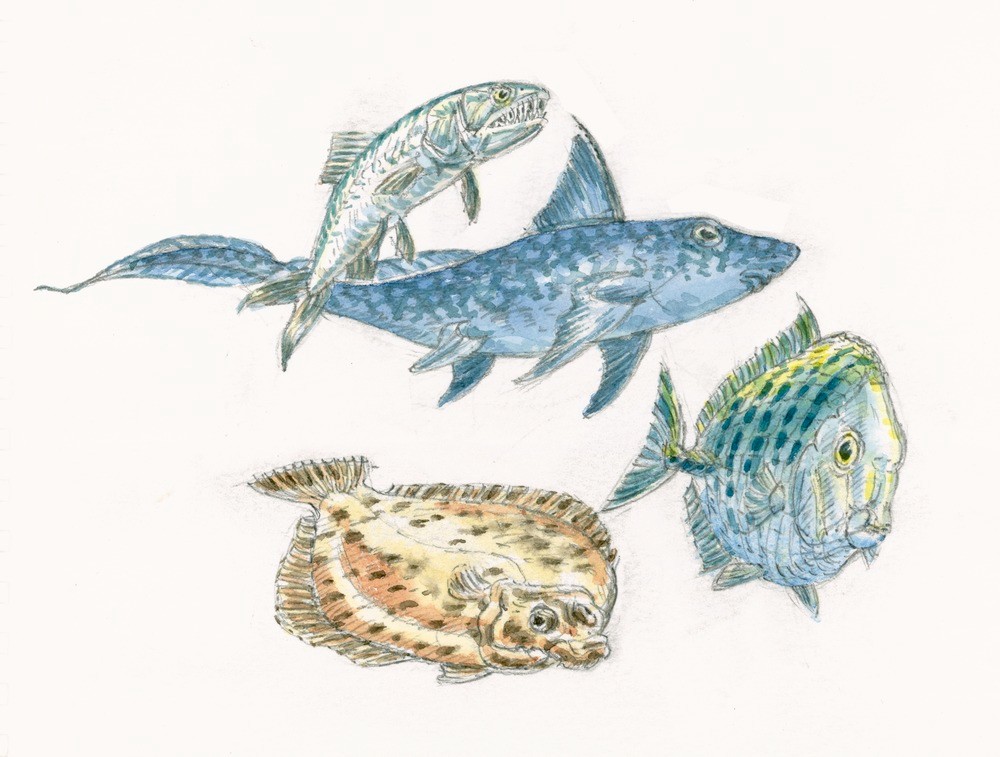| P number: | P549490 |
|---|---|
| Caption: | Palaeogene fish. |
| Description: | During the late Cretaceous and Palaeogene, fish underwent a phase of rapid evolution, particularly amongst the bony fish. This was the time when the modern fish began to develop, including the ancestors of cod and haddock; salmon and trout; perch, carp and catfish. These all fall within a large group of fish called teleosts which live in seas, rivers and lakes. They differ from primitive ray-finned fish by having smaller, thinner scales, streamlined bodies, larger eyes, good hearing, improved swim bladders to aid buoyancy and modifications to the fins to improve agility. Primitive ray finned fish, such as Pycnodus (bottom right), lived in coral reefs and had peg-like teeth used to crush molluscs and sea urchins. Enchodus (top) is a more advanced ray-finned fish. This agile salmon-like fish had reduced scales, a streamlined body and elongate interlocking teeth so that it could hunt in the surface water of the oceans. Eobathus (bottom left), is a flat fish that lived on the sea floor and was an early relative of plaice, sole and halibut. Ischyodus (middle) was a cartilaginous fish closely resembling modern ratfish. It had a tall dorsal fin with a spine (in living species this has a poisonous point used in defence), a whiplash tail and large eyes. Fish are cold-blooded vertebrates with a braincase, fins for swimming and gills to take oxygen from the water (although some also have lungs). They therefore differ from other aquatic creatures like invertebrate molluscs or crabs; amphibians and reptiles, which have lungs and limbs rather than gills and fins; and whales and dolphins which are warm-blooded mammals. Fish are the first vertebrates, having evolved during the early Cambrian over 500 million years ago. |
| Photographer: | Unknown |
| Copyright statement: | NERC |
| Orientation: | Landscape |
| Size: | 383.90 KB; 1000 x 757 pixels; 85 x 64 mm (print at 300 DPI); 265 x 200 mm (screen at 96 DPI); |
| Average Rating: | Not yet rated |
| Categories: | Best of BGS Images/ Artworks |
Reviews
There is currently no feedback

